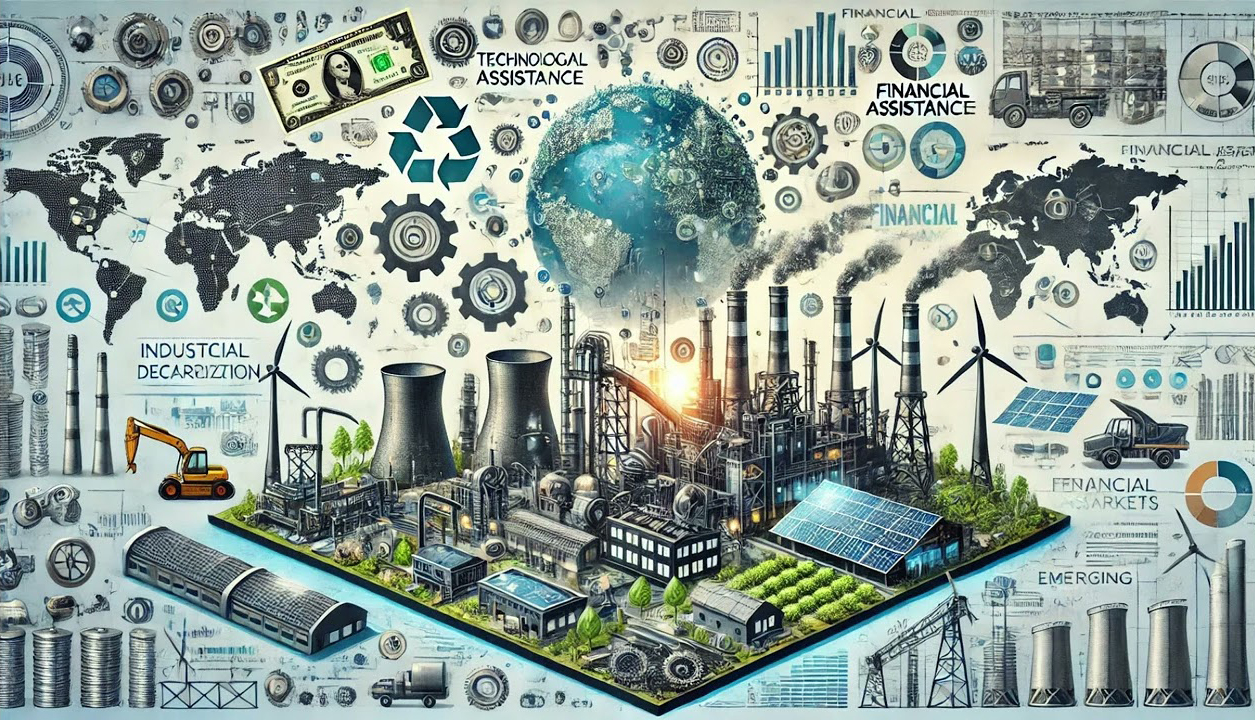
Decarbonization refers to the process of reducing carbon dioxide (CO2) and other greenhouse gas emissions produced by human activities, primarily from the burning of fossil fuels. This goal is vital in the context of global efforts to address climate change and limit global warming, as the accumulation of greenhouse gases in the atmosphere is a major driver of rising temperatures, extreme weather events, and other harmful environmental consequences.
The Need for Decarbonization
The primary source of CO2 emissions comes from the burning of fossil fuels like coal, oil, and natural gas for electricity, transportation, and industrial activities. As these fuels are burned, carbon is released into the atmosphere, contributing to the greenhouse effect and global warming. According to the Intergovernmental Panel on Climate Change (IPCC), achieving significant decarbonization is essential for keeping global temperature rise well below 2°C above pre-industrial levels, as stipulated by the Paris Agreement.
The environmental consequences of failing to decarbonize are dire. Increased carbon emissions lead to a range of negative effects, including rising sea levels, disruptions in food and water availability, more frequent and severe heatwaves, and the loss of biodiversity. Additionally, vulnerable populations, particularly in developing countries, are disproportionately affected by these impacts. Therefore, decarbonization is not only an environmental necessity but also a moral imperative.
Strategies for Decarbonization
To achieve decarbonization, significant changes are needed in several sectors of the economy, including energy, transportation, and industry. Several strategies can help achieve this ambitious goal:
- Transitioning to Renewable Energy: One of the most effective ways to decarbonize is by transitioning from fossil fuels to renewable energy sources such as wind, solar, hydropower, and geothermal. These energy sources do not emit CO2 and are considered sustainable alternatives that can meet growing energy demands without harming the environment.
- Energy Efficiency: Improving energy efficiency in buildings, appliances, and industrial processes can significantly reduce energy consumption, thereby decreasing emissions. Adopting smarter technologies, such as energy-efficient lighting, insulation, and smart grids, can lower carbon footprints across various sectors.
- Electrification of Transportation: The transportation sector is a major contributor to carbon emissions. The widespread adoption of electric vehicles (EVs) and the development of charging infrastructure are key steps in reducing emissions from cars, trucks, buses, and trains. Additionally, transitioning to electric public transport systems and developing greener alternatives like hydrogen-powered vehicles are other viable strategies.
- Carbon Capture and Storage (CCS): CCS technologies involve capturing CO2 emissions at their source (such as power plants or factories) and storing them underground, preventing them from entering the atmosphere. While still in the early stages of development, CCS could play a significant role in decarbonization, particularly for industries that are difficult to fully electrify.
- Carbon Offsetting: Companies and individuals can also participate in carbon offset programs, which allow them to invest in projects that reduce or capture CO2 emissions, such as reforestation or clean energy initiatives. While not a substitute for direct emissions reductions, offsets can help mitigate some of the environmental impact.
The Role of Policy and Innovation
Government policies are crucial to achieving decarbonization. Through regulatory frameworks, subsidies for renewable energy, carbon pricing mechanisms, and international agreements, governments can create an environment that fosters the transition to a low-carbon economy. The Paris Agreement, for instance, is an example of global cooperation aimed at reducing emissions to mitigate climate change.
Innovation also plays a critical role in decarbonization. As new technologies emerge, they can accelerate the transition to sustainable practices. For example, innovations in battery storage, hydrogen fuel cells, and smart grids offer new opportunities to reduce emissions and improve energy management.
Conclusion
Decarbonization is a complex yet necessary challenge that requires concerted action from governments, industries, and individuals alike. By transitioning to renewable energy, improving energy efficiency, electrifying transportation, and exploring carbon capture technologies, society can significantly reduce carbon emissions and mitigate the harmful effects of climate change. The transition to a low-carbon future may be difficult, but it is both possible and essential for securing a sustainable, livable planet for future generations.





Leave a Reply